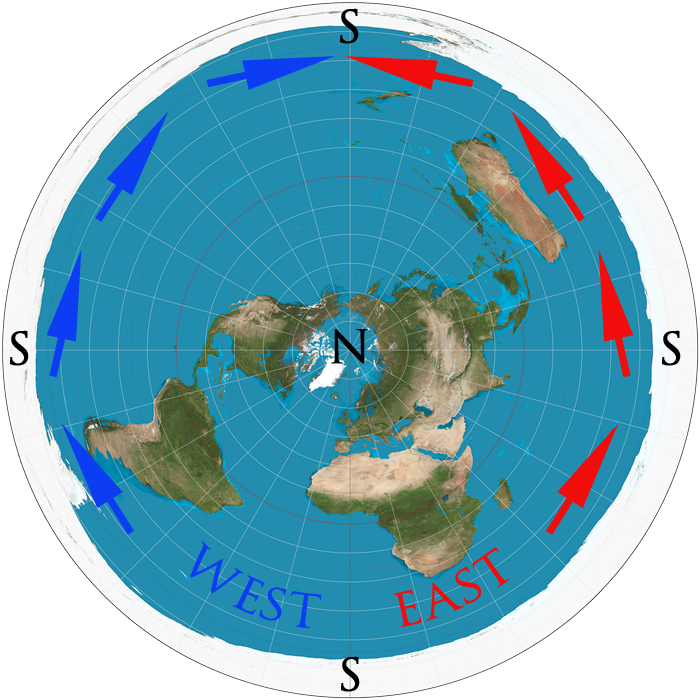
Question: Countless explorers have circumnavigated the globe. How do you explain this if the Earth is flat?
Answer: These explorers/sailors simply sailed East or West until they arrived again at their starting point. This in no way indicates that the world is round. When using a compass to navigate land or sea, the needle will always point towards the North Pole, from which East and West can be determined. Polaris, the "North Star," also serves as a reliable beacon of true North, from which East and West can be easily ascertained. On the Flat Earth, if one were to head due East or West via the compass (or Polaris), they would inevitably end up back at their original starting point.
Note that the North Pole is at the center of the Earth. The entire outer ring then is "South." If one sails due East or West, they will inevitably end up back where they started.

Note: Explorers in the 1700s and 1800s estimated that they had traversed more than 50,000 miles when trying to circumnavigate Antarctica, which is actually the outer ice ring on the Flat Earth (e.g. James Cook, James Clark Ross, the British "Challenger" expedition). Bear in mind that, according to NASA, the globe is only 25,000 miles in circumference.
ANOTHER PROOF OF THE FLAT EARTH: While the earth has been circumnavigated east to west and west to east, it CANNOT be done going north to south, i.e. beginning at the north pole, travelling south [on the 'front' of the globe] to the 'south pole' at the 'bottom', and then continuing in the same direction to return [on the 'back' of the globe] to the north pole 'on top'.
Click here for more on the Flat Earth.